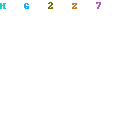
The Last Supper:
On the first day of the Festival of Unleavened Bread or Passover, Jesus sent two of his disciples ahead with very specific instructions on where to prepare the Passover meal. That evening Jesus sat down at the table with the twelve apostles to eat his final meal before going to the cross. As they dined together, he told the twelve that one of them would soon betray him. One by one they questioned, "I'm not the one, am I, Lord?" Jesus explained that even though he knew he would die as the Scriptures foretold, his betrayer's fate would be terrible: "Far better for him if he had never been born!" Then Jesus took the bread and the wine and asked his Father to bless it. He broke the bread into pieces, giving it to his disciples and said, "This is my body, given for you. Do this in remembrance of me."
And then he took the cup of wine, sharing it with his disciples and said, "This wine is the token of God's new covenant to save you--an agreement sealed with the blood I will pour out for you. He told all of them, "I will not drink wine again until the day I drink it new with you in my Father's Kingdom." Then they sang a hymn and went out to the Mount of Olives.
The Passover commemorated Israel's escape from bondage in Egypt. In Exodus, the blood of the Passover lamb was painted on the door frames, causing the plague of the firstborn to pass over their houses sparing the firstborn sons from death. The Last Supper was very significant because Jesus showed his disciples he was about to become the Passover Lamb of God. His blood would open the door to freedom. His followers would exchange slavery to sin and death for eternal life in God's Kingdom.
• Typically wine is served four times during the Passover meal. According to Jewish tradition, the four cups represent four expressions of redemption. The first cup is called the cup of sanctification; the second is the cup of judgment; the third is the cup of redemption; and the fourth is the cup of the kingdom. • These verses surrounding the Last Supper form the biblical basis for the practice of Communion.
• There are 3 main Christian views regarding the blood and the wine during the practice of Communion:
- -The bread and the wine become the actual body and blood of Christ. The Catholic term for this is Transubstantiation. - The bread and the wine are unchanged elements, but Christ's presence by faith is made spiritually real in and through them. - The bread and the wine are unchanged elements, used as symbols, representing Christ's body and blood, in remembrance of his enduring sacrifice.
• Judas had already determined that he would betray Jesus, yet still he shared in the communion of the Passover meal.



5 comments:
Hello. This post is likeable, and your blog is very interesting, congratulations :-). I will add in my blogroll =). If possible gives a last there on my blog, it is about the Servidor, I hope you enjoy. The address is http://servidor-brasil.blogspot.com. A hug.
keep the good work going...
happy easter!!
mobin
Good post...Happy easter
Tressy, Hi it is Skye. I love your blog. The truth will set you free!
Love never fails
You have a darlin day
Skye
new blogger https://skyesunlimited.com
Post a Comment